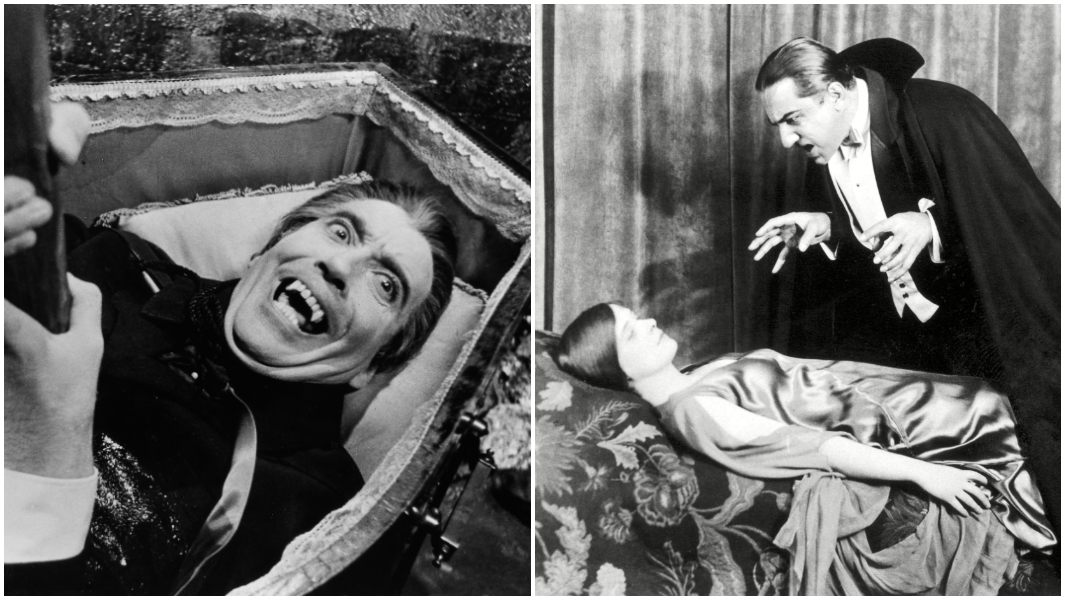How the largest vampire epidemic created a modern day monster

The vampire isn’t just a fang-tastic legend, but a powerful symbol as well.
But the modern-day vampire has evolved from what it once was in Eastern Europe.
Vampires have become idealized in many ways - often appearing in books and movies.

However, that wasn’t always the case.
Vampires were once seen as the root cause of diseases during a time when knowledge of viruses did not exist.
So how did the vampire become the pop culture icon and modern-day monster it’s known as today?
It is mostly due to folklore from Eastern Europe during the largest vampire epidemic.
Known as the Great Vampire Epidemic or "vampire controversy", the movement preoccupied the people of the eastern and southern provinces of the Austrian Empire from 1725 to the 1750s.
Although evidence of vampires in Slavic belief dates back to the 9th century, it could actually be even older than that!
People often thought vampires were responsible for rabies, with the name coming from the Latin term for “madness.”
Rabies, which is primarily spread through biting, causes muscle contractions in the esophagus which causes victims to avoid eating, drinking, or swallowing their saliva, eventually causing foaming at the mouth.
It also leads to altered sleep patterns and increased hostility, which were common characteristics of vampires.
Another disease vampires were believed to be largely responsible for was pellagra.
Pellagra is a disease caused by a discrepancy in niacin and tryptophan.
It causes many symptoms including a corpse-like appearance to the skin, horrible breath, anaemia, and other symptoms tied to vampire folklore.

Both diseases cause a sensitivity to light, which is described in many depictions of vampires.
Although vampire beliefs emerged well before these diseases, pellagra and rabies are a significant part of vampire history because they were epidemic during the vampire controversy.
During the Great Vampire Epidemic, vampire myths began to spread widely throughout Europe.
As disease continued to make its way around Eastern Europe, supernatural causes were blamed, and people became consumed by vampire hysteria.
Many people believed that vampires would never truly die and could continue living after death, but that they could be stopped by damaging their corpses.
To eradicate the problem, “vampire burials” took place - a method used to impede the vampire from returning by defiling its grave or mutilating its corpse through burning or beheading.
Vampire burials also included putting a stake through the heart, covering the body in garlic, and following many other Slavic traditions.
During this period, there were about 30 documented cases of people being exhumed, and their bodies either staked, dismembered, or burned (sometimes all three) in an effort to stop them from frightening the living.
However, it has been estimated that the total number is several hundred.
During this time, Austrian and German soldiers fighting the Ottomans in the region observed the mass defilement of graves and went back home to Western Europe with stories about the vampire, further spreading the folklore.
The hysteria spreading throughout Europe led to the Serbian word “vampir,” after first beginning in German as “der vampyr” around 1726.
By 1734, it had transitioned into “vampire” in English.
After doctors and scientists began debunking the idea of the vampire, it had already made its way into a topic of debate.

By the 19th century, it began to slowly blend into literature, theatre, and film.
Had the Great Vampire Epidemic not happened, and had rabies and pellagra not been principally responsible for it occurring, the vampire’s spread into pop culture may never have happened and we wouldn’t know the vampire as we know it today.
Read more about vampires as part of the myths and magic spread in Guinness World Records 2024, out now!
Want more? Follow us on Google News and across our social media channels to stay up-to-date with all things Guinness World Records! You can find us on Facebook, Twitter/X, Instagram, Threads, TikTok, LinkedIn, and Snapchat Discover.
Don't forget to check out our videos on YouTube and become part of our group chat by following the Guinness World Records WhatsApp channel.
Still not had enough? Click here to buy our latest book, filled to the brim with stories about our amazing record breakers.


